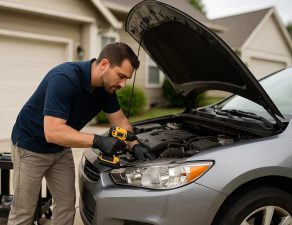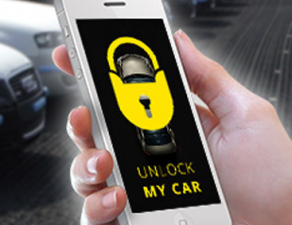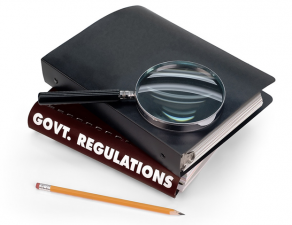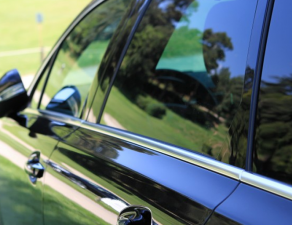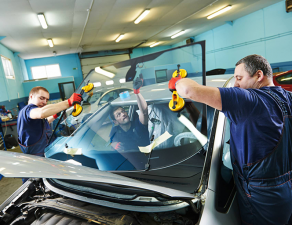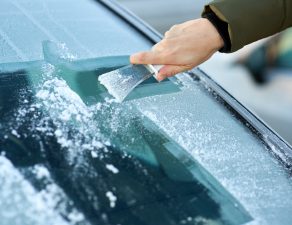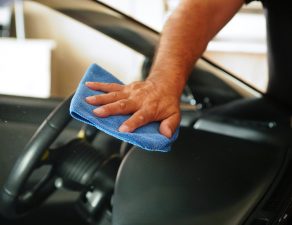You probably don’t give your car much thought when it’s running well, but the minute there’s trouble it’s all you can think about. Car problems can really put a crimp in your day, not to mention your wallet, but many common issues are actually easy to troubleshoot on your own.
Even if you can’t fix it yourself (or are uninterested in doing so), knowing what’s wrong with your auto will make the trip to your mechanic a lot less stressful. Much like a visit to the doctor, troubleshooting ahead of time will save you time and allow you to feel confident about the diagnosis.
Instantly Get Up to 3 Local Windshield Replacement Quotes
Here are a few of the more common car problems you may encounter:
Engine Won’t Start
Symptoms: Engine turns over very slowly but won’t start. Clicking sound when you turn the key. Nothing at all happens when you try to start the engine.
Possible reasons: The most likely reason for no or limited action from the engine when attempting to start your car is a dead battery. The general lifespan of a battery is two to five years, so when a battery reaches the end of its life, it simply won’t be able to retain a charge.
Solutions: The easy answer is to take your car to a repair shop and have them replace the battery. If you’re a little more inclined, you can test the battery yourself in your own garage or, if you want to impress the neighbors, in your driveway or on the street. For an ideal reading, wait twelve hours after turning off the engine, and though you don’t need to disconnect the battery, make sure everything is off, including the lights. Clean any corrosion off the battery terminals first, and then using a car battery tester, connect the red cable to the positive terminal (+) and the black cable to the negative terminal (-), then note the meter reading.
Stalling or Idling Roughly
Symptoms: An engine that idles roughly, stalls just after being started or when coming to a stop, or idles high.
Possible reasons: A rough idle or frequent stalling could mean that your spark plugs have residue built up on them. This residue may be caused by a poor gasoline-to-air mixture, a situation in which the vehicle is said to be “running rich.” Or the spark plugs may have simply reached the end of their life, which is generally 30,000 miles. A rough idle or engine hesitation could also mean faulty spark plug wires, which you should replace at the same time as your plugs.
Solutions: It’s time to replace your spark plugs! You’ll need a deep socket wrench for this job. Wait several hours for the engine to cool, and then remove the spark plug covers. Pull the plugs out by the caps so you don’t break the wires, and replace them with clean ones. Do this one at a time so you don’t mix up which wire attaches to which plug. It’s a fairly simple procedure, though it can take some time.
If the plugs are too far back to easily reach, it may be wise to let your mechanic do the job. You may also need a mechanic if any of the plugs are damaged because you could wind up breaking one off, and that means big trouble and expense.
Blown or Missing Fuses
Symptoms: Radio, cigarette lighter, or other parts of the electrical systems suddenly stop working.
Possible reasons: You may have a blown fuse if something in your car suddenly dies, like the headlights go out even though you’ve recently replaced them. Fuses can blow because of an overload, a short, or simply through long-term use.
Solutions: You’ll find the fuse box under the dashboard on the driver’s side, and some cars may have a second fuse box under the hood. Both should be clearly marked. Remove the cover and locate the fuse that corresponds to the problem you have; much like a home fuse box, the individual fuses will be marked. If not, your car owner’s manual can help you.
Once you find the appropriate fuse — and you’ll know that it’s blown by a very obvious melted “bridge” — or discover that it’s missing, pull it out and replace it with the new one. Make sure you use a fuse of the same amperage or you’ll find yourself with a much bigger problem.
Brake Problems
Symptoms: “Soft” or “mushy” brake pedal (sinks to the floor too easily). Car does not stop properly. Brakes squeak or grind when applied.
Possible reasons: There are few things scarier than stepping on the brake pedal and not having it respond quickly. Low or contaminated brake fluid could be the culprit when you have amushy brake pedal. If you hear squeaking or grinding when braking, worn brake pads or rotors are likely the cause.
Solutions: Check the brake fluid level and top it off if necessary. If you suspect contaminants, like air or water, you’ll need tobleed your brakes, which is usually a job for a mechanic. Brake pads and rotors should also be checked, and replaced if necessary.
With some attention to detail and a little ingenuity, most of the common car problems are things you can troubleshoot — and even fix — without the need to take your car to a mechanic. Of course, your first priority is to be safe, so if you’re unsure of the problem or don’t feel qualified, it’s best to take it to the shop.
